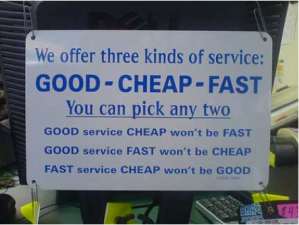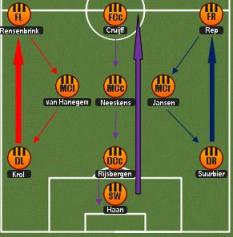Request For Proposals (RFPs) are the lifeblood of marketing agencies and yet last week I declined one of the most exciting RFPs that I have come across in the past 12 months….and I still feel sick to my stomach. It was for an industry-leading brand, working on a highly visible global B2B campaign with a big budget and a fantastic team. But sometimes you need to know when to say ‘no’.
It is easy to get carried away with the excitement of receiving an RFP, particularly when it comes from a new potential customer, and even more so when it reads like the one we turned down. But getting carried away on formulating an adequate reply can cost the agency a lot of wasted time and money; winning an unsuitable RFP can end disastrously.
Here are the six criteria I use to determine how we reply to an RFP:
1. Client Fit
The most important question is whether the potential client is a good fit. Do they add value to your portfolio? Do you feel you have something unique and valuable to offer them? Do you have a positive experience in their sector? Although it is tempting to go for every attractive RFP, if the answer to any of the previous questions is ‘no’ you have to consider whether your time and effort isn’t better spent attracting or working on a ‘sweet spot’ client.
2. Project fit
Does the particular project match your highest best? Does it play to the strengths of your agency? Are you able to fulfil the requirements of the project? Any answers apart from a solid ‘yes’ means you need to politely decline. If only part of the RFP is a perfect match, you might consider partnering with another entity – it might mean sacrificing part of the profit but it will be worth the peace of mind. Alternatively, you should ask whether you could respond to only part of the request, providing convincing reasoning why you are still worth considering.
3. Resource availability
The client might be the perfect fit and the project playing to your absolute highest best, but if you don’t have the available resources (or the ability to resource up), the chances are that the perfect project will end up a massive disappointment. Lack of resources to deliver will generally end up in rushed jobs with mediocre results and/or late delivery. Worse, it might prevent you from servicing your other clients, creating a negative knock-on effect.
Last minute resourcing typically sees your profit margins being eaten away by expensive freelancers and contractors. Make sure you consider the resource requirements carefully and factor these costs into your proposal with a good margin of error to avoid disappointing yourself and ultimately the client.
4. Budgets
 Some say ‘the best things in life are free’…but unfortunately that doesn’t apply in business. Delivering quality costs money but, in turn, should always provide the client with a good return on investment. That is the essential win-win criteria for an effective client-supplier relationship. When you have reached this point in your considerations, you need to know what the budgets are and if you don’t know, you need to ask.
Some say ‘the best things in life are free’…but unfortunately that doesn’t apply in business. Delivering quality costs money but, in turn, should always provide the client with a good return on investment. That is the essential win-win criteria for an effective client-supplier relationship. When you have reached this point in your considerations, you need to know what the budgets are and if you don’t know, you need to ask.
If you don’t at least get a budget range, I would seriously question the sanity of investing time in the RFP. Having a budget isn’t an opportunity to fleece the client by pricing it right to the limit, but should instead mean that you design the best possible solution within the boundaries set by the client.
5. Win potential
The most subjective factor in your decision is the probability of winning. Your chance of winning is unfortunately not just based on a good fit in terms if client or project, or even the quality of your response. Very often other factors come into play, including whether other agencies responding are better positioned than you to deliver the goods, or whether the incumbent agency has an unbreakable bond with the client.
My advice is to always ask how many agencies are included in the RFP (the more agencies, the less inclined I am to reply). Research the RFP owners and see whom they are connected to on LinkedIn or who they are communicating with on social media (this can often uncover a strong bond with other agencies). Search the Internet for potential agencies the company may have worked with (often awards are a good indicator). None of these factors necessarily imply you decline, but at least you go in with your eyes wide open. As I said, this is very subjective so go with your gut. If you don’t feel confident you have a good chance of winning, maybe now is the time to back away.
6. Future potential
Lastly, although the longevity of the relationship and the guarantee of further work are not necessarily essential, I always consider the future potential of the account. If you are going to invest money in an RFP you should do so under the assumption that you are going to win and therefore willing to commit your valuable resources. If you are willing to commit your resources and, assuming your resources like everything else on earth are limited, you do so at an opportunity cost – the value of the other projects you will have to forego to deliver this one. Therefore it is always worth considering clients that offer a high lifetime value, over those that represent a one-off gain as the acquisition costs are often the same.
Back to my RFP…Sadly, the one I turned down was a perfect fit in terms of client and project. It would no doubt have had a decent budget and certainly had a huge potential for the future. Unfortunately, we didn’t have the resources available to deliver our highest best and submitting a proposal would have put at risk all the potential benefits. In the interest of the potential client and for the chance to work with them in the future, we had to withdraw.
Don’t get me wrong, all the above doesn’t make that decision any less painful…but it does make it easier.

